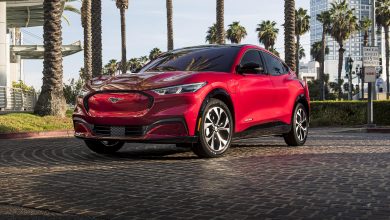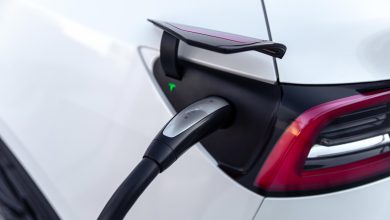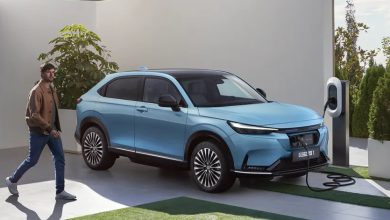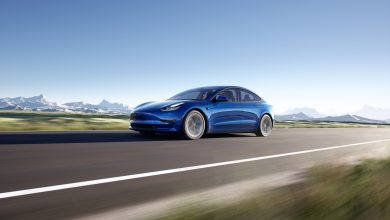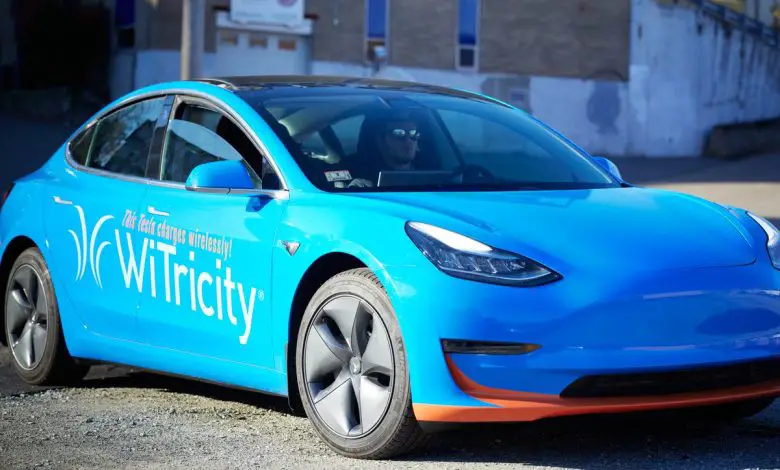
The EV industry has changed the outlook of people on vehicles. A few decades ago, no one thought of vehicles running on electricity. This EVolution has caught the world a storm. EV sales are already multiplying all across the globe. Now there are talks about a revolution in EV charging. It is the introduction of wireless charging for consumer electric vehicles. Recent analysis has predicted the wireless consumer electric vehicle charging market will grow and be at around $2 billion by 2028.
Some companies have already started working on the project in the US. They have advertised that this technology provides a seamless and user-friendly method of charging the car with minimal energy loss. This method will get popular among the public because there is virtually no need to step out of the vehicle.

What is wireless charging?
Conventional forms of charging that we have been using for decades include a wire, whether these are for our home appliances, mobile phones, laptops, or other gadgets. Similarly, charging your electric car also requires plugging in the charger. This creates a mess of cables and makes the process clumsy. Wireless charging has essentially no wires involved. It only contains magnets, and instead of wire to transfer the energy, the medium these magnets use is air, which is invisible to us. Therefore, the overall setup gives a much cleaner and more sophisticated look.
Significance of electric vehicles:
Electric vehicle sales have almost doubled across the globe. This also means increased demand for charging stations. Electric grids and electric stations in the US can handle this load now. However, they might need help from newer technologies to diversify the load of vehicles at the charging stations shortly. This makes wireless charging an even brighter prospect. The benefit of wireless charging is that it can work both with stationary and moving vehicles. At the same time, electric vehicle charging stations require consumers to leave their cars for charging.
Let’s look into the basics of wireless charging.
How does it work?
Wireless charging makes use of magnetic coils. There should be a pair of coils for any wireless setup to work. One is installed into the charger and the other into the device. So, when both come close to each other, electricity is transferred in the form of magnetic waves. Both the components should be close to each other but maintaining direct contact is not necessary since magnetic waves can pass through air.
Types of Wireless EV Charging:
As already pointed out, wireless EV charging can occur both when the vehicle is stationary and moving along the road. Let’s see the details of both.
Static wireless charging:
This charging system more or less resembles a wired system in all its aspects, except, off-course, there are no wires. You have to keep your vehicle parked in place for it to be charged, just like the process in wired charging. However, the benefit lies in the fact that you do not have to get out of the car. In fact, you have to park the car at the right place, and the car will start to get charged itself. There is no getting out of the car and plugging in the charger process here.
In this type of charging, a transmitter is present inside the ground. This transmitter is connected to the nearby grid, which provides energy. The receiver is situated on the underside of the car. The main goal is to line up the receiver and the transmitter, and the car starts charging.
This type of charging is more beneficial when the vehicles remain parked for longer times. Therefore, potential areas to target for installing these stations would be office areas and shopping malls.
Dynamic wireless charging:
This is where things start giving a real insight into the future. The vehicle does not need to be stationary for charging. Instead, people can charge their vehicles while moving on the roads. The concept is to place transmitters beneath the roads that can transmit their waves over long distances. The vehicles moving over such roads can charge their batteries via the receiver beneath them. This technology is more suited for public transport that runs on well-defined routes. However, some companies such as Qualcomm and ElectRoad have started the initiative; in some years, it could become a part of our lives.
Bright prospects:
A recent survey by WiTricity indicates that 96% of those surveyed would like access to wireless charging, with 70% more likely to buy an EV if wireless were available. Electric car manufacturers have indicated a release of compatible models by 2025. Some companies have released models like Genesis GV 60, which are compatible with wireless charging.
Process of electric charging:
HEVO is a US-based company making progress by leaps and bounds in the introduction of wireless charging. Let’s use their setup as an example to explain how wireless charging works:
1)Reserving the station:
Since there are a limited number of outlets at the moment, you have to reserve your charging at the nearest station. The app also provides navigation to the nearest station, making the process more seamless and exciting.

2) Aligning the vehicle:
As we have discussed before, the keys to wireless charging are two components, transmitters located beneath the ground and receivers beneath the car. Maintaining their maximum alignment can result in numerous benefits, including faster charging, maximum efficiency, and minimum energy loss.
Once you have done the alignment, the car starts to charge itself. You can sit inside the car and wait for the car to get charged. You can watch something for entertainment or attend a meeting during this time.
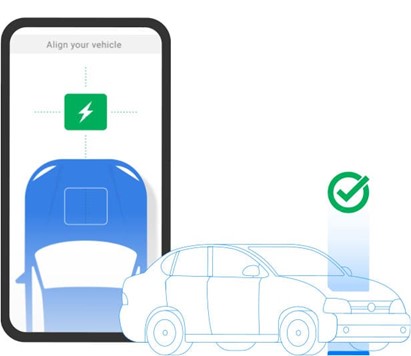
3)Keep an eye on the app:
The app will give you all the details, including how much the car has been charged, how much more time is left before a full charge, and how many miles are available at the current charging.

Benefits of wireless charging:
People have gotten used to wireless charging their gadgets. As they have witnessed ease and user-friendliness in the process, they are now demanding that wireless charging be incorporated into electric vehicles too. Here are some benefits to back up their claim.
“What we do is incredibly simple. We make it possible for you to charge your electric vehicle wirelessly. Just as fast as plugging in. With WiTricity, charging is now easier and more convenient.” – ALEX GRUZEN, CEO, WITRICITY
Efficiency:
In wired charging, there are a lot of energy losses. First, the electrical energy is transmitted from the electric grids to the charging stations over the wires. Here, it gets wasted as heat. Secondly, during the charging process, the car’s or the wire’s heating can cause further energy losses. Whereas with wireless charging, the process is quite simple. There are only two coils, and energy is easily transferred between them. The essential factor that determines efficiency is the overlap of the coils. Therefore, about 90-93% efficiency can be achieved while using magnetic charging.
Lower charging times:
Stats have shown that an average magnetic wireless charger can give charging speeds four times than an 11kW AC charger and parallel to a 50kW DC charger. These are pretty impressive stats, provided the energy transfer is taking place without any wire being involved. This will attract more consumers in the future, and as time goes on, further improvement in technology can push the numbers even up further.
Takes the load off electrical grids:
For now, electricity production in the US has been up to the mark to handle the increased number of consumer electric vehicles easily. But keeping in mind the increasing trend of shifting to electric vehicles, these grids might be at risk in the future. Therefore, installing wireless charging stations as backup options could be the right move.
Smart detection:
The good thing about wireless charging is that the coil can easily detect when another coil or a receiver comes at the top of it. Therefore, you only have to park the car in the right position, and the car will start getting charged. There is no need to press any buttons or get out of the car to plug in the charger. You continue enjoying the movie, attending a meeting, or calling your friends or family while sitting in the car.
Moreover, this intelligent detection applies to other objects as well. These wireless chargers can detect when a magnetic object, such as a tin can, or a living object, such as your pet, are nearby and halt the charging while giving an indicator. This prevents any accident from happening and ensures that the vehicle’s charging goes smooth and uninterrupted.
Battery health:
One of the tips to have good battery health over the years is to keep it away from both the maximums, i.e., 0% and 100% charging. This is more easily possible with wireless chargers than with wired chargers. With wireless chargers, people can charge while their car is parked at their office or outside any restaurant, shopping mall, or cinema. Whereas wired charging stations require a nearby electric grid; therefore, they are seldom seen at such locations. Hence, people prefer to charge their vehicles up to 100% whenever they get the chance, so they would not have to worry about charging every now and then.
Works with variable distances:
Wireless charging is compatible with all vehicles ranging from cars to pickup trucks. The transmitter is strong enough to charge the batteries present at measurable distances. Therefore, different vehicles can get charged at the same station.
Benefit for fleet owners:
Transportation companies such as cab owners require frequent charging of their vehicles. Providing them a platform where they can quickly charge multiple of their vehicles at once could prove to be very beneficial for them in terms of saving time and money. Some wireless charging companies have offered such startups, but the process is yet in the pipeline.
Compatible with autonomous vehicles:
Autonomous vehicles can not take advantage of wired charging. If wireless charging becomes practical on a large scale, it could open the door to more autonomous vehicles.
Conclusion:
The world is going towards the phase where people must make a minimum effort. Autonomous vehicles and wireless charging are the two key examples. These revolutionary ideas will bring a significant change in the world once they become practicable at a large scale. The real question is not if but when this is going to happen.

